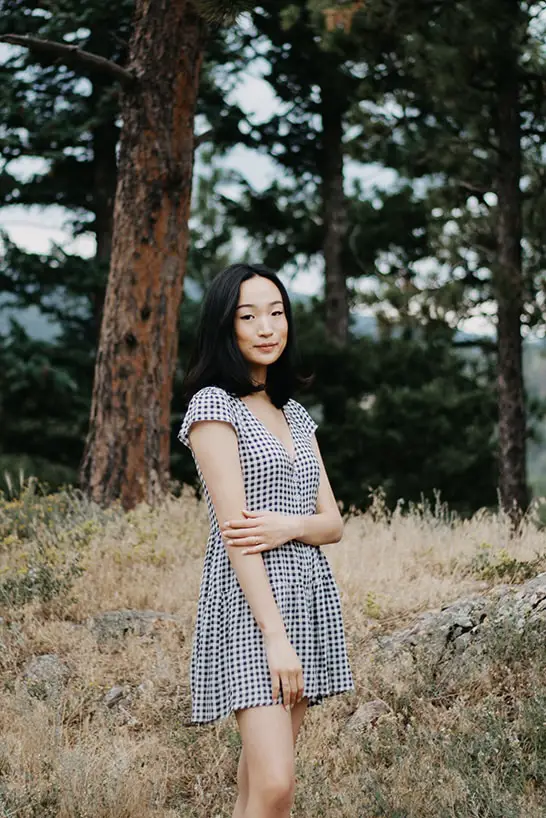If you don’t know who Emma Chamberlain is, you’re either lying or you haven’t been on the internet lately. The high school dropout turned millionaire took her approachable, relatable personality and turned it into over 20 million followers across social media platforms, as well as a successful business and a long-term partnership with fashion house Louis Vuitton.
She is casual and open — the type of girl who talks about her bodily functions and bad days on camera. On Instagram she is uncurated yet simultaneously aesthetic, clean and organized without being rigid. Amassing more followers on Instagram than on her original platform, YouTube, there is no doubt that she has cracked the code to Instagram fame. What is most notable about Chamberlain’s feed, though, is that it strays away from the sort of highly curated photos that Instagram was once known for.
Although Chamberlain certainly can’t be credited with the creation of casual Instagram (#makeinstagramcasualagain), she has played a massive part in it. Mirror photos of her crying to images of her childhood bedroom all have a lived-in quality that is both beautiful and seemingly “real.” Posting content nearly every day, it is implied that her everyday life is worth sharing with her 15 million Instagram followers.
Chamberlain isn’t the only one who curates her Instagram this way, of course. Users like Julianna Citali (136,000 followers), Ruby Lyn (476,000 followers) and Lydia Campanelli (311,000 followers) all share the same aesthetic and have even created a joint spam account with 12 other Instagram influencers to share “outtakes” and extras. Called 1nternet.gf, the account has acquired over 143,000 followers. Photo dumps are huge on Instagram as of late, and the account follows this trend. Defined as an assortment of (mostly) random photos, photo dumps certainly encourage regular and frequent posting, inherent to the idea of casual Instagram and its roots in daily life.
Other users have followed suit. Celebrities like Dua Lipa, as well as regular, everyday people, have begun posting varied versions of casual posts. A recent post of Lipa’s, acquiring over 1 million likes, includes a picture of a table with jelly beans spilled on it.
While Instagram was once privy to highly posed photos like those of the Kardashian-Jenner clan, it has rounded a corner to an aesthetic that is more intricate in its execution. While “casual” implies uncurated and unposed, there is no doubt that casual Instagram and the It Girl is just as performative as the version of Instagram that it succeeds. There is a certain curated undone-ess about casual Instagram and the It Girl it has created (or perhaps vice versa). Each photo seems spontaneous, just one moment in a life that is, in its entirety, beautiful and aesthetic. They might be blurry, out of focus, or even what would normally be considered mundane, but are beautiful simply because they are “casual.”
Unfortunately, but expectedly, casual Instagram is as much an illusion as the previous version of Instagram. Instagram is inherently performative — and it’s hard to move away from that. But casual Instagram blurs the line between unposed life and posed life. It maintains that your life should be always beautiful, not only when you decide to take a photo and strike a pose. It means that your everyday attire should be an Aritzia tracksuit, that your daily drink should be a handmade matcha latte, and that your daily life should preferably be curated in a palette of neutrals.
The evolution of casual Instagram, as well as the It Girl aesthetic, is affected by commodification, of course. Once primarily a photo-sharing app, the company has added major commercial features. With an entirely separate page to shop, as well as the ability to add product tags to photos and videos, Instagram is on the way to turning into an e-commerce platform. Its discoverability features have not only served the social aspects of Instagram but have no doubt helped to fuel its latest changes.
When influencers and businesses realized that fans and viewers no longer wanted to see such highly curated lives, they pivoted toward a version of life that was still beautifully maintained, but now seemed to lack the work necessary to appear as such. Now, instead of lavish dinners and galas, you can push juicers and matching sweatsuits.
All of this means that people now see these lives as attainable and in reach, but simultaneously view the people that they belong to as vastly different. After all, they are still beautiful, wealthy and mostly white. This is Instagram, after all, and it still maintains some sort of exclusivity and need to consume and push products. That’s part of the reason why Instagram can never be fully casual — it needs to feel aspirational.
Instagram has already begun to lose its shine, despite the ways that users are trying to reform it. The struggle to achieve real authenticity and connection on Instagram, whether it be on the business side or simply the personal side, means that people are moving away from it. Authenticity and diversity are everything to Gen Z, which has hastened the move away from Instagram and toward apps like TikTok and newer players like BeReal. Acquired by Facebook, which hoped that Instagram was the magnet it needed for a younger demographic, the platform is decidedly losing out among its peers. In fact, in an internal memo, Facebook said that “if we lose the teen foothold in the U.S. we lose the pipeline.”
The memo from October 2020 communicates fears that stemmed from as far back as 2018, when Instagram reportedly funneled nearly all of its annual worldwide marketing budget into promoting the app to a younger, teen audience. Although Instagram isn’t necessarily losing its overall number of users, its growth is shrinking. Having just moved past the milestone of obtaining over 2 billion users worldwide, there is no doubt that the platform has a lot of power — but it’s losing the demographic it’s been trying to keep.
Well, Emma just posted something. I’ll be right back.

















